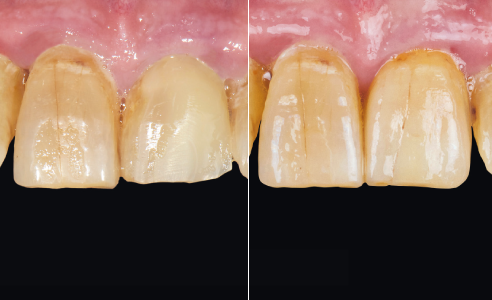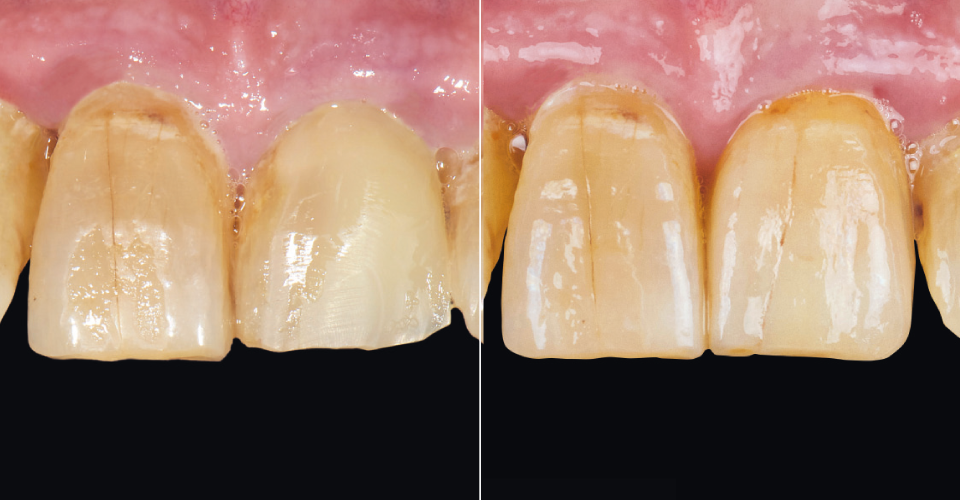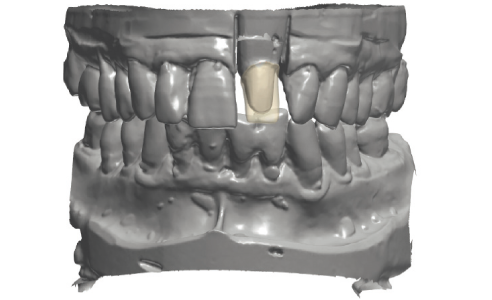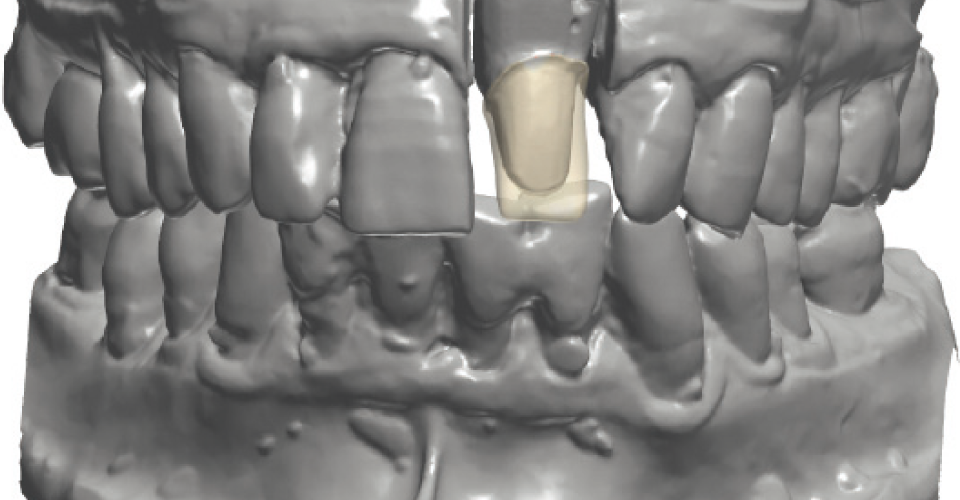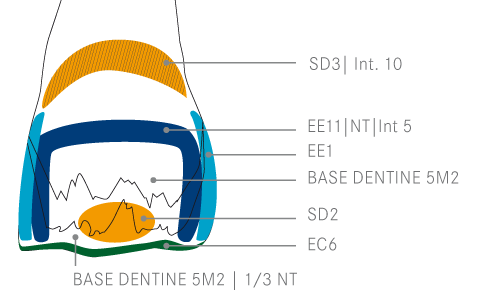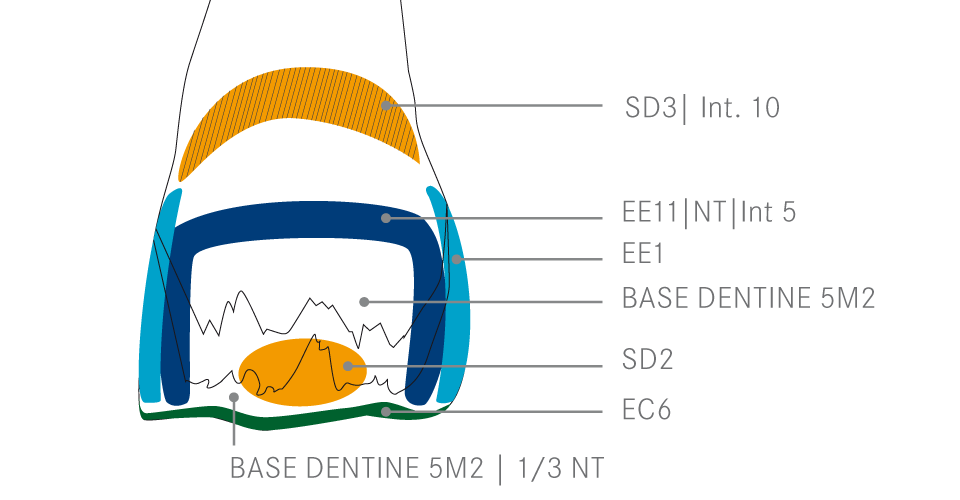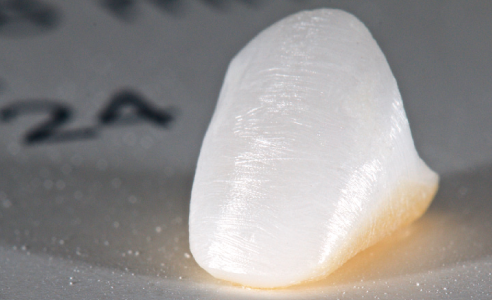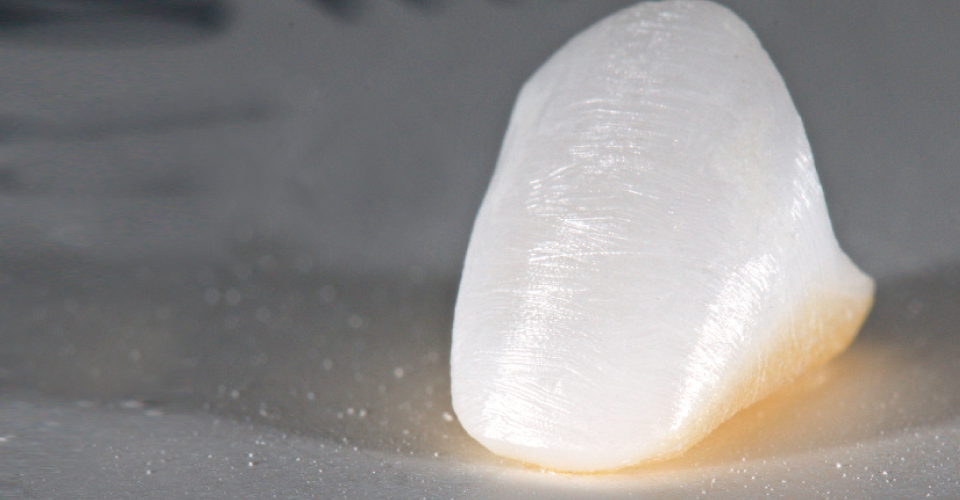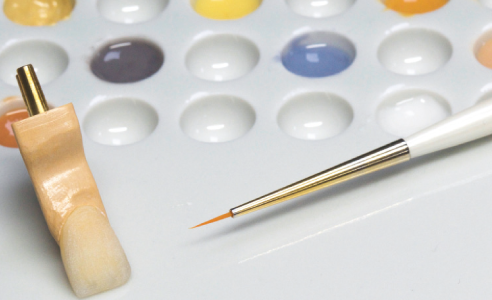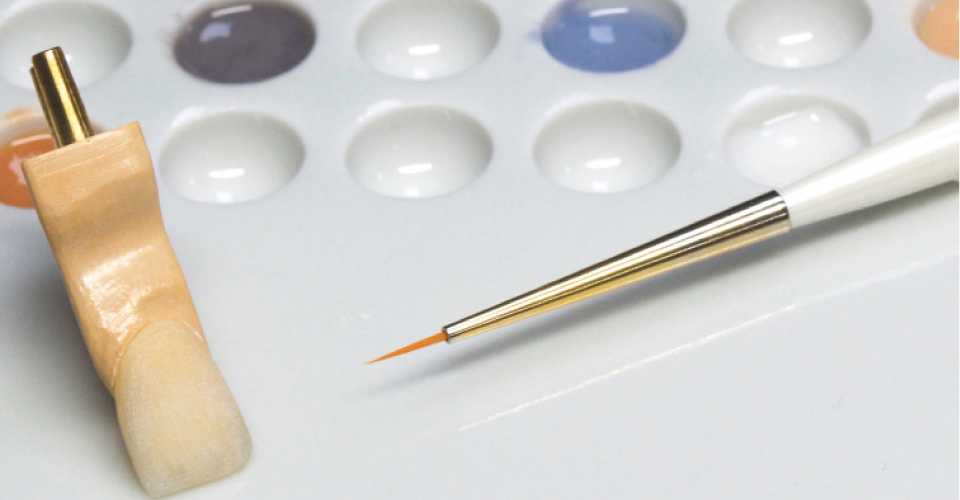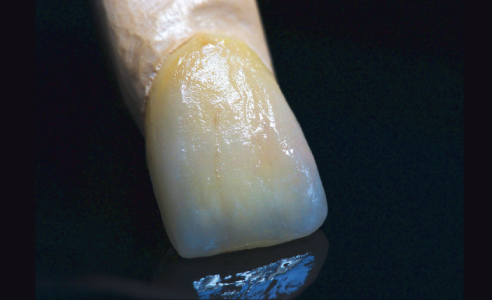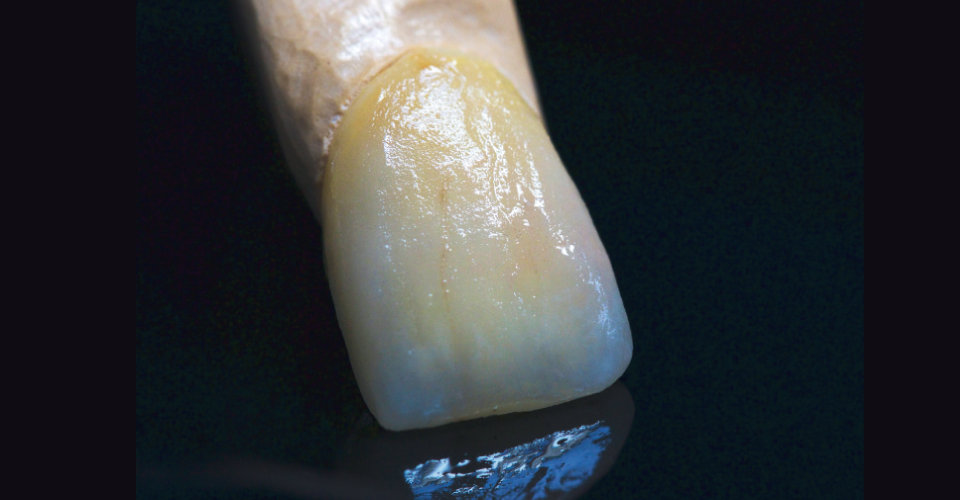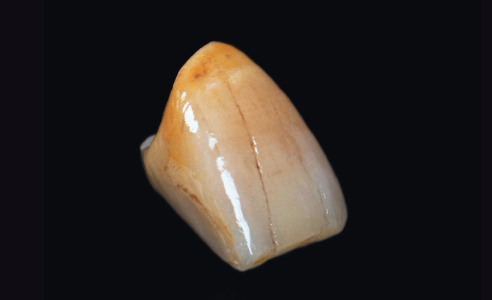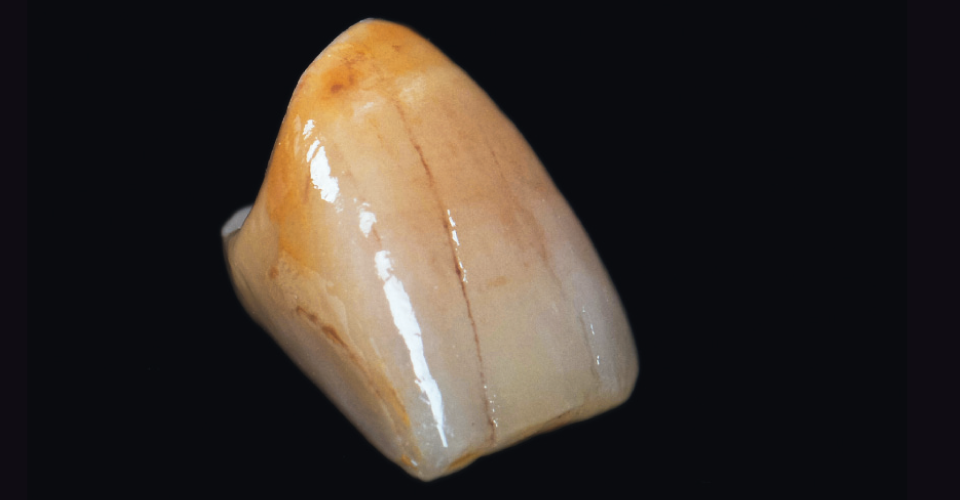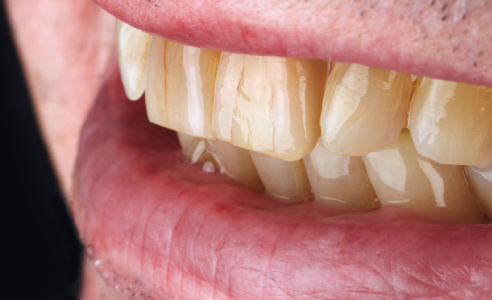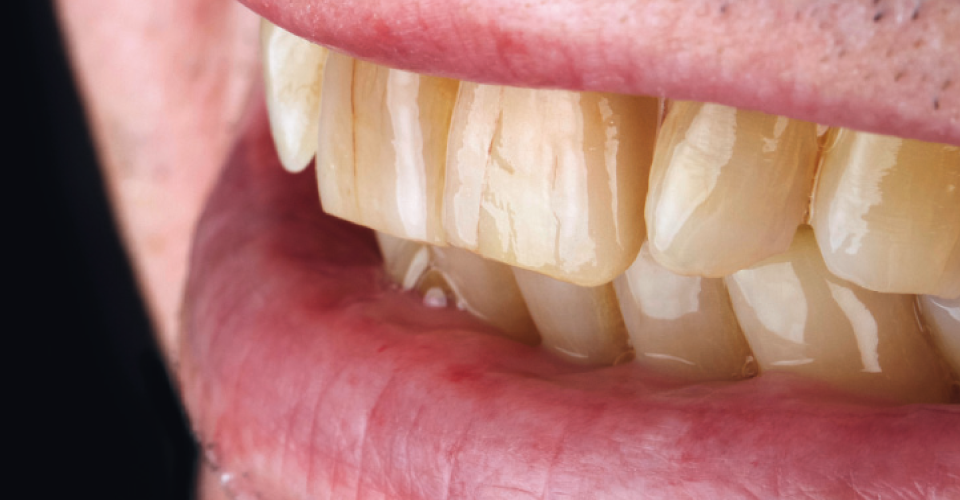For age-appropriate esthetics: Natural effects with VITA VM materials
It becomes especially challenging for dental technicians to produce natural, age-appropriate reconstructions in the visible area of the mouth for older people. It is recommended to establish a very planned procedure based on the characteristics of the natural teeth for the individualization and characterization of such a restoration. This is the only way results can be achieved that fit harmoniously into the remaining tooth substance. Dental technician Carolin Wehning (Bocholt, Germany) shows how such a complex case can be solved with VITA VM 9 veneer ceramics and VITA INTERNO materials for internal characterization (all VITA Zahnfabrik, Bad Säckingen, Germany) in the following case study.
1. Assessment and planning
A 77-year-old patient entered the dental practice after a coronal transverse fracture at 21, which had already been treated with a direct composite structure. Clinically, the results were morphologically and esthetically inadequate. On the adjacent natural tooth 11, age-related discolorations, initial white and brown spot lesions in the cervical area, and a vestibular transverse dark brown crack were apparent. The dentist and patient decided to restore the tooth with a full ceramic crown for long-term stabilization, in which the color effect of the adjacent tooth 11, was to be reproduced in detail. In order to achieve a predictable result, the situation was molded and a model was developed for a wax-up. Tooth 21 was prepared for a full crown and a master model was produced using a precision mould.
2. CAD/CAM fabrication and veneering
The crown framework was made of CAD/CAM-supported VITA YZ HT zirconium dioxide. For a deep initial fluorescent effect, a wash firing was performed with EFFECTLINER 5 (orange) and EL6 (green-yellow). "Layering with VITA VM 9 was the basis for reproducing the basic shade. The VITA INTERNO materials then enabled me to intensify the deeper individual shade nuances after the wash and dentine firings," said Wehning, describing the key steps of ceramic reproduction. INT04 (orange) and INT11 (gray-brown) were used in the cervical and interdental areas; INT5 (terracotta) was used in the center. The inside areas were nuanced with shades of INT8 (blue), INT5 (brown), and INT7 (anthracite); the incision with INT2 (sand). Cracks and brown spots could be reproduced with INT10 (brown), and white spots with INT1 (white).
3. Finalization of the restorations
After working out the basic morphology with the stone and the details with a fine diamond, the inside crack was pulled from the outside with a fissure bur to achieve a three-dimensional effect. The surface texture was kept as smooth as possible, in accordance with the patient's age. After the glaze firing, only a goat-hair brush and diamond polishing paste were used to slightly reduce the gloss effect. After trying out the fully-ceramic crown, the patient was very satisfied with the result, and a self-adhesive bond was applied. The shade and form of the restoration integrated harmoniously with the other teeth. The ceramic veneer in combination with two stain-colored fires made it possible to achieve an age-appropriate esthetic.



